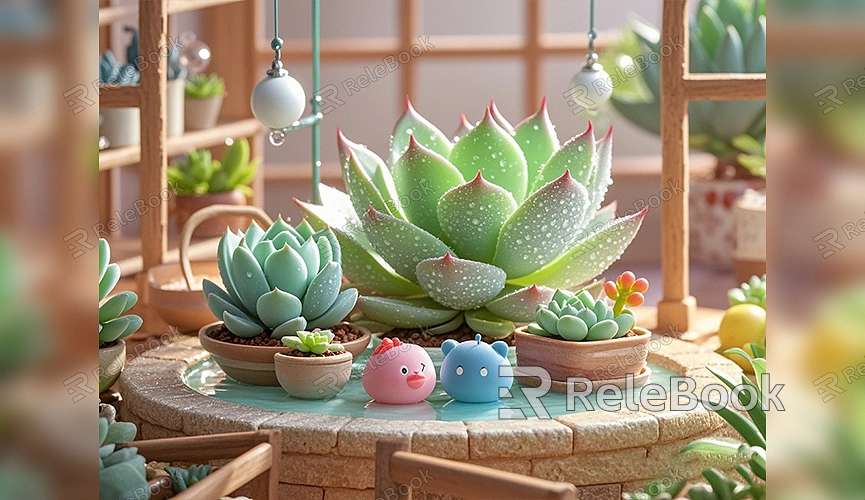How to Render from Sequencer in Blender 2.8
Blender 2.8 is a powerful and widely-used 3D software that not only excels in modeling, animation, and rendering but also features a robust video editor—the Video Sequencer. For users who need to perform multiple creative tasks on a single platform, Blender is an ideal choice. This article will guide you through the process of using the Video Sequencer in Blender 2.8 to edit and render high-quality video files.
1. Initial Setup and Project Import
Before you start rendering with Blender’s Sequencer, make sure your project settings are correct. Open Blender 2.8; the default interface is the 3D view, but you can switch to the Video Editing workspace by clicking the “Video Editing” preset at the top. This will bring you to a workspace better suited for video editing and sequencing.
Before importing your assets, it's a good idea to set up the basic project parameters. Click on the “Output Properties” tab where you can select the resolution, frame rate, and output path for your files. Common choices are 1080p resolution and a frame rate of 24 to 30 frames per second (FPS). Adjust these settings based on the requirements of the platform where you plan to share the video.

2. Importing and Organizing Assets
Next, import your video, image, and audio files into the Sequencer. Drag and drop these assets onto the timeline and arrange them according to your video’s structure. Blender’s timeline offers various view modes; you can choose “Waveform” to clearly view audio waveforms or “Image Preview” to see thumbnails of video clips.
To keep your project organized and efficient, place different types of assets on separate tracks. For example, put video clips on upper tracks and audio files on lower tracks. This organization will make it easier to adjust and edit each component individually.
3. Editing and Applying Effects
Blender’s Sequencer is more than just a basic editing tool; it supports a range of effects and transitions. You can use various cutting tools to split, trim, and splice video clips, and add transitions like fades and cross dissolves to make your video smoother and more professional.
Additionally, Blender provides numerous effect options, including color correction, blurring, speed changes, and lens distortion correction. These effects can enhance the visual quality of your video. For instance, color correction tools can adjust the hue, contrast, and brightness to make the video look more cohesive and vibrant. If you need to add subtitles or annotations, Blender’s text tools offer easy-to-use solutions.
4. Rendering Settings and Output Format Selection
Once your editing is complete, it’s time to set up the rendering parameters. The settings you choose will directly impact the final video’s quality and file size. In the “Render Properties” tab, select either the Eevee or Cycles rendering engine. Eevee is suitable for fast previews and simpler projects, while Cycles offers higher-quality rendering for complex lighting and reflections.
After choosing a rendering engine, select the output format. Common video formats include AVI, MP4, and MOV. MP4 is usually preferred as it provides good quality while keeping file sizes manageable, making it ideal for online sharing or storage. You can also choose whether to render audio with the video or export the audio separately for post-production.

5. Starting the Render and Monitoring the Process
When all settings are configured, you can start rendering. Click “Render” in the top menu, then select “Render Animation.” Blender will begin rendering each frame of the timeline and output it to the specified folder. Depending on your project’s complexity and your computer’s specifications, rendering times may vary. During this process, you can monitor the progress and check the quality of the output files.
Be aware of your computer’s performance, especially when dealing with high-resolution or lengthy videos. If rendering is slow or resources are insufficient, try adjusting the rendering settings, such as lowering the resolution or reducing the use of effects, to speed up the process.
6. Post-Processing and Resource Recommendations
After rendering, you’ll find the completed video file in your output path. You can further process the video by adding background music, adjusting audio levels, or adding subtitles. For higher-quality 3D resources to enhance your project, such as high-quality textures and HDRIs, you can download them for free from [Relebook](https://textures.relebook.com/). For beautiful 3D models, visit [Relebook](https://3dmodels.relebook.com/) for a wide selection of premium resources. These resources can significantly enhance your project and make your video stand out.
This article has covered how to render from the Sequencer in Blender 2.8. We discussed the entire process from project setup and asset import to editing, rendering, and post-processing. Blender’s versatility and powerful rendering engine make it an ideal tool for creators, capable of handling complex 3D modeling, animation, and high-quality video editing tasks. We hope this guide helps you better master Blender’s Sequencer features.


